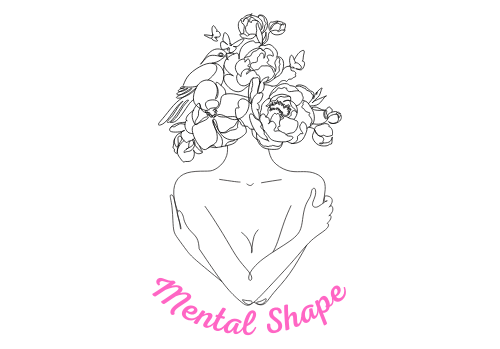Are you searching for a natural and soothing approach to enhance your overall well-being? Look no further than aromatherapy! This captivating article explores the fascinating question of whether aromatherapy can seamlessly blend with traditional therapy methods. As you read further, you will uncover the potential benefits of incorporating aromatic essential oils into your holistic healing journey. Get ready to discover the harmonious marriage between nature’s scents and the power of traditional therapy methods.
Understanding Aromatherapy
What is Aromatherapy?
Aromatherapy is a holistic healing practice that involves the use of essential oils to promote physical, emotional, and psychological well-being. Essential oils, which are extracted from various parts of plants, contain the aromatic compounds that give plants their unique scents. These oils can be inhaled, applied topically, or even ingested (under the guidance of a qualified practitioner), and they are believed to have therapeutic effects on both the mind and body.
History of Aromatherapy
The use of aromatic plants for therapeutic purposes can be traced back thousands of years across multiple cultures. Ancient civilizations like the Egyptians, Greeks, and Romans recognized the medicinal properties of plants, and they incorporated aromatics into their daily lives, religious rituals, and healing practices. The term “aromatherapy” was coined in the 20th century by French chemist René-Maurice Gattefossé, who discovered the healing properties of lavender oil after accidentally burning his hand and finding relief through its application.
How Does Aromatherapy Work?
Aromatherapy works through the inhalation or absorption of the volatile aromatic compounds present in essential oils. When inhaled, these compounds stimulate the olfactory system and trigger responses in the brain that can influence emotions, memory, and physiological processes. Essential oils can also be absorbed through the skin, where they may interact with underlying tissues and provide localized benefits.
Traditional Therapy Methods
What are Traditional Therapy Methods?
Traditional therapy methods refer to established psychological and psychiatric approaches that aim to promote mental and emotional well-being. These methods are typically conducted by trained professionals and can include various modalities such as cognitive-behavioral therapy (CBT), psychoanalysis, art therapy, and group therapy, among others. The focus of traditional therapy is on addressing specific concerns, developing coping mechanisms, and facilitating personal growth and healing.
Examples of Traditional Therapy Methods
Some common examples of traditional therapy methods include:
- Cognitive-Behavioral Therapy (CBT): Focuses on identifying and modifying unhealthy thoughts and behaviors to promote positive change.
- Psychoanalysis: Explores the unconscious mind and seeks to uncover repressed experiences and emotions that may be influencing present behavior.
- Art Therapy: Utilizes creative expression as a means of communication and self-discovery.
- Group Therapy: Involves facilitated sessions within a group setting, fostering a sense of community and support.

Benefits of Aromatherapy
Physical Benefits of Aromatherapy
Aromatherapy has been found to offer various physical benefits. For example, certain essential oils, such as lavender and chamomile, have been shown to promote relaxation, reduce stress, and improve sleep quality. Eucalyptus and peppermint oils are known for their decongestant properties and can be helpful in relieving respiratory issues. Additionally, aromatherapy massages, which involve the application of diluted essential oils onto the skin through gentle massage techniques, can help alleviate muscle tension, reduce inflammation, and improve circulation.
Psychological Benefits of Aromatherapy
Aromatherapy has long been recognized for its psychological benefits. The inhalation of specific essential oils can have a profound impact on mood and emotions. For instance, citrus oils like sweet orange and bergamot are known to uplift and energize, while lavender and chamomile oils have calming and soothing effects. Peppermint oil is often used to enhance focus and concentration. Aromatherapy has also shown promising results in reducing symptoms of anxiety, depression, and stress.
Potential Integration of Aromatherapy with Traditional Therapy
Complementary Roles
Aromatherapy can complement traditional therapy methods by providing an additional dimension to the therapeutic experience. The use of essential oils can create a multisensory environment that enhances relaxation, aids emotional release, and fosters a deeper sense of connection with oneself. By integrating aromatherapy into traditional therapy sessions, therapists can create a safe and supportive space for their clients to explore and process their thoughts, emotions, and experiences.
Enhancing the Therapeutic Environment
The incorporation of aromatherapy into therapy settings can help create a more welcoming and calming ambiance. The pleasant scents of essential oils can help to alleviate any tension or anxiety that clients may be experiencing, allowing them to feel more at ease during their sessions. The use of aromatherapy diffusers or scented candles can be particularly beneficial in creating a soothing atmosphere that supports relaxation and emotional openness.

Research on the Effectiveness of Aromatherapy
Scientific Studies on Aromatherapy
Numerous scientific studies have explored the efficacy of aromatherapy and its potential benefits. These studies have shown promising results, indicating that aromatherapy can have positive effects on various aspects of well-being. For example, a study published in the Journal of Alternative and Complementary Medicine found that inhaling lavender essential oil reduced anxiety levels in patients waiting for dental treatment. Another study published in the International Journal of Nursing Practice showed that using aromatherapy with essential oils such as rose and lavender improved sleep quality in elderly individuals in a long-term care facility.
Evidence of Aromatherapy’s Impact on Mental Health
Research suggests that aromatherapy can have a positive impact on mental health conditions such as anxiety and depression. A 2017 study published in the Journal of Clinical Psychiatry found that the inhalation of a blend of essential oils including lavender and bergamot reduced anxiety levels in patients with generalized anxiety disorder. Another study published in the Journal of Affective Disorders demonstrated that aromatherapy massage using a blend of lavender and bergamot oils significantly reduced depressive symptoms in women with postpartum depression.
Common Essential Oils Used in Aromatherapy
Lavender
Lavender essential oil is one of the most widely used and versatile oils in aromatherapy. It is known for its calming and soothing properties, making it a popular choice for promoting relaxation, reducing anxiety, and improving sleep quality.
Peppermint
Peppermint essential oil is renowned for its invigorating and energizing effects. It can help enhance focus and concentration, alleviate headaches and migraines, and relieve muscle pain and tension.
Eucalyptus
Eucalyptus essential oil is commonly used for respiratory support. It has decongestant properties and can be helpful in relieving nasal congestion, sinusitis, and coughs.
Tea Tree
Tea tree essential oil is valued for its antimicrobial properties. It can be used topically to help fight acne, fungal infections, and skin irritations.
Rosemary
Rosemary essential oil is known for its stimulating and uplifting properties. It can improve mental clarity, enhance memory, and promote feelings of alertness and focus.
Safety Considerations
Proper Dilution and Usage
Though essential oils have many potential benefits, it is important to use them safely and responsibly. Essential oils are highly concentrated substances and should never be applied directly to the skin or ingested without proper dilution or the guidance of a trained professional. Dilution with a carrier oil, such as jojoba or coconut oil, is recommended to reduce the risk of skin irritation.
Potential Risks and Side Effects
In some cases, essential oils can cause allergic reactions or sensitivities. It is essential to perform a patch test before using a new oil. Certain essential oils, such as citrus oils, can also cause photosensitivity and should be used with caution when exposed to sunlight. Additionally, pregnant women, individuals with certain medical conditions, and children should consult with a qualified practitioner or healthcare provider before using essential oils.
Incorporating Aromatherapy into Therapy Settings
Practical Tips for Therapists
Therapists interested in integrating aromatherapy into their practice can start by familiarizing themselves with essential oils and their properties. It may be helpful to attend aromatherapy workshops or consult with a qualified aromatherapist to gain a deeper understanding of how to select and use oils effectively. Therapists can also consider incorporating aromatherapy gradually into their sessions, starting with subtle scent diffusers or inviting clients to choose their preferred essential oil for a massage or inhalation experience.
Integration in Different Therapy Practices
Aromatherapy can be integrated into various therapy practices, including individual counseling, group therapy, and alternative modalities such as massage therapy, acupuncture, or yoga. In individual counseling, therapists may utilize aromatherapy as a relaxation tool or as a means of creating a more comfortable and therapeutic environment. In group therapy, aromatherapy can enhance the sense of connection and create a shared experience within the group. In alternative modalities like massage therapy, the use of aromatherapy oils can further enhance the therapeutic benefits.
Client Experiences and Testimonials
Anecdotal Reports on Aromatherapy and Traditional Therapy
Many individuals have reported positive experiences when combining aromatherapy with traditional therapy methods. Clients have noted that the use of essential oils during therapy sessions promotes a sense of calm and relaxation, enhances emotional release, and deepens the therapeutic experience. Some clients have also reported that aromatherapy helps them to access and process deeply buried emotions, making their therapy sessions more effective and transformative.
Feedback from Therapy Clients
Therapy clients who have experienced aromatherapy as part of their treatment have shared positive feedback regarding its effects. Many have reported feeling more relaxed, focused, and open during their sessions. Clients have also noted improved sleep quality, reduced anxiety levels, and increased overall well-being as a result of integrating aromatherapy into their therapy experience. However, it is essential to recognize that individual experiences may vary, and what works for one person may not necessarily work for another.
Conclusion
The Potential of Aromatherapy as a Complementary Therapy
Aromatherapy offers a valuable and complementary approach to traditional therapy methods. By harnessing the therapeutic properties of essential oils, aromatherapy can enhance emotional well-being, promote relaxation, and provide an additional avenue for self-reflection and personal growth. When integrated into therapy settings, aromatherapy can create a more supportive and nurturing environment for clients, facilitating their healing journeys.
Implications for Future Research
While there is increasing evidence supporting the effectiveness of aromatherapy in promoting physical and mental well-being, further research is needed to fully understand its mechanisms of action and efficacy. Continued exploration of the specific benefits of different essential oils, optimal dosages, and the integration of aromatherapy into specific therapy modalities can contribute to the development of evidence-based guidelines and protocols for its use in therapy settings. As research in this field progresses, the potential for aromatherapy to complement traditional therapy methods grows, providing a holistic and comprehensive approach to healing and overall well-being.

